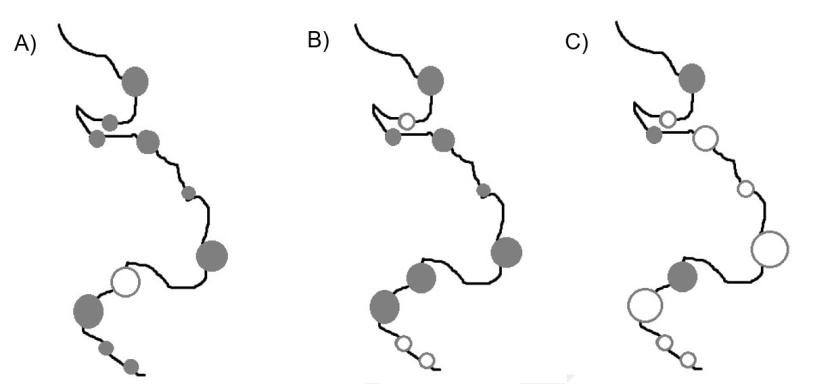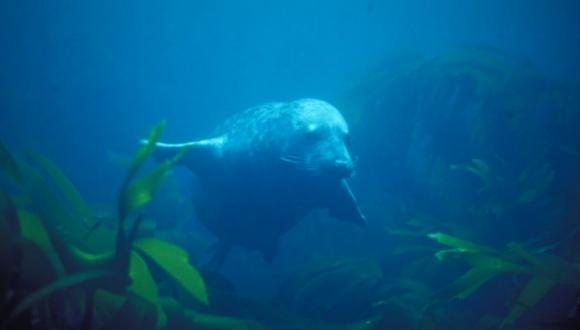Guidance Note 5: Guidance to support Offshore Wind Applications: Recommendations for marine bird population estimates
Published: 2023
Version 1: January 2023
This document is part of a series of guidance notes available on Advice on marine renewables development - marine ornithology.
This guidance note sets out our advice for marine bird population estimates. Please see Guidance Note 1 - Guidance to support Offshore Wind Applications: Marine Ornithology which provides the context within which this guidance note is provided. Check the log of updates in guidance note 1 to ensure the most current version is being followed. We expect each and every developer to adhere to this guidance, including the recommended parameters to provide consistent and comparable results for all Scottish projects to be assessed as an individual project and cumulatively. This guidance note should be used in conjunction with the Cumulative Effects Framework (CEF).
1. Introduction
An important part of the impact assessment process is looking at population level impacts of any predicted effects. The site reference population is the population estimate at the point a site is classified / designated, while the current population estimate is the most recent (these may be the same if no recent surveys have been undertaken).
There are two steps at which population estimates are therefore required; the first is during apportioning to populations (i.e. breeding colonies – these can be protected as Special Protection Areas (SPA) and Sites of Special Scientific Interest (SSSI) or non-designated sites). At this first stage we require population estimates for all populations that have been identified as having connectivity (see Guidance note 3: Marine Birds - Identifying theoretical connectivity with Breeding Site Special Protection Areas using breeding season foraging ranges and Guidance note 4 - Ornithology - Determining Connectivity of Marine Birds with Marine Special Protection Areas and Breeding Seabirds from Colony SPAs in the Non-Breeding Season). The second stage at which population estimates are required is when population viability analyses (PVA) are undertaken for specific populations.
This note sets out which data and sources should be used to derive population estimates.
Please note that this is written prior to the completion of the Seabirds Count Census and in the middle of the ongoing Highly Pathogenic Avian Influenza mortality event (which is likely to affect the relevance of population counts prior to 2022), and therefore this should be considered interim guidance. We will update this guidance once the census has been published and will provide updates and guidance on HPAI as they become available. In the interim please contact [email protected] should you have any specific queries.
2. Breeding Colony Population Estimates
For the vast majority of breeding colonies and species the 4th National Seabird Census, ‘Seabirds Count’ has produced updated counts. Although these have not yet been fully collated and published, they are available from the Seabird Monitoring Programme (SMP) Database, noting that the national gannet census was completed during 2013-2014 and this time period should be used for gannets. To ensure that an assessment is as robust and accurate as possible, we advise that the most up to date counts (available on the SMP database) are used. However, given that the census did not cover all colonies we are aware that there may be scenarios were one or more colonies/species have not got up to date counts. We set out three scenarios and options for how to use the available evidence.

Figure 1: An example stretch of coastline with small and large populated colonies represented by small and large dots. The solid grey dots represent counted colonies and grey circles with white centres represents colonies without a recent count. Three scenarios are presented: A) Scenario 1 where all colonies are counted except one major colony; B) Scenario 2 where most colonies are counted except a few small colonies; and C) Scenario 3 where most colonies are not counted.
Scenario 1 – Most colonies counted, except one major colony
For future Scottish offshore wind developments awarded option area agreements, we consider the most likely scenario will be that most colony and species combinations with connectivity to the proposed development will have been surveyed in Seabirds Count. We advise that counts completed during the Seabirds Count period (years 2018 – 2021) should be used for these colonies. However, if there is a major colony with connectivity that has NOT been counted as part of the recent census, we recommend that developers undertake a survey of this colony. However, given the ongoing HPAI mortality event further advice must be sought from NatureScot at the earliest opportunity, if this situation is identified.
Scenario 2 – Most colonies counted, except a few small colonies
Another possible scenario would be that most colony and species combinations with connectivity to a proposed development have been surveyed in Seabirds Count, with a few smaller colonies not included. In this scenario there are two options for obtaining population estimates:
- Option 1: carry out new surveys of these colonies
- Option 2: use regional trend data to estimate likely changes since Seabirds 2000
With both options, further advice must be sought from NatureScot specifying the colonies being assessed.
Scenario 3 – Most colonies are not counted
This is the least likely of the scenarios, where most colony/species combinations with connectivity to a proposed development are not surveyed in Seabirds Count but Seabird 2000 data are available. In this scenario we would advise the use of Seabird 2000 data across all the colonies for apportioning. In this scenario, the available data would require review by NatureScot before we can provide specific advice on suitability for Population Viability Analysis (PVA).
Apportioning
For compatibility and consistency purposes (e.g. during the apportioning process) where not all colonies included have recent population updates, then all colonies need to use values taken from a similar time period. We provide further advice on apportioning approaches within Guidance Note 9 - Seasonal periods for birds in the Scottish Marine Environment.
3. Marine SPAs
Between 2020 and 2022 a suite of marine SPAs were designated in Scottish waters for inshore wintering waterfowl; foraging areas for breeding terns; foraging areas for breeding red-throated divers; important areas for European shags; wintering gulls; and aggregations of true seabirds (both breeding and non-breeding). The purpose of these SPAs is to help protect the birds as well as the rich feeding grounds and supporting habitats that they depend upon. If there is connectivity to a marine SPA (see Guidance note 4 - Ornithology - Determining Connectivity of Marine Birds with Marine Special Protection Areas and Breeding Seabirds from Colony SPAs in the Non-Breeding Season) we recommend that the site-specific Conservation Objectives and Conservation and Management Advice (CMA) documents are used to derive populations to inform the HRA assessment. These can be found on SiteLink.
If there is a marine SPA with connectivity that has NOT been recently counted, we recommend that developers contact NatureScot to discuss the requirement to undertake a survey of this site.
3.1 Inshore wintering waterfowl
For all waterfowl species, the site-specific information includes a reference population that is considered the most appropriate for assessments of plans and projects. Where this is based on the citation population at classification or recent surveys, the site reference population is rounded using standard procedures (Stroud et al. 2001). We note that in some instances there may be some overlap between wintering qualifying features of marine SPAs and existing estuarine SPAs. Population estimates differ between marine SPAs and existing inshore SPAs due to the different areas covered and surveys they have been based on. If a development has connectivity to both a marine SPA and a neighbouring estuarine SPA, each SPA should be assessed separately.
3.2 Seabirds (including breeding terns, European shags and aggregations of true seabirds)
For breeding and non-breeding seabirds within marine SPAs, an estimate of the number of each qualifying feature using the site is not available. The average figures from European Seabirds at Sea (ESAS) data used for site selection purposes gave an indication of the relative importance of the relevant marine SPAs. However, these figures represent only a snapshot of usage because the entire population of the relevant breeding colonies are not at sea at any one time and are not solely confined to those areas identified as marine SPAs. The total number of individuals using the site over the breeding and non-breeding seasons will be well in excess of the estimate used for site selection purposes and will reflect the populations from many different colonies and the turnover within the site. These marine SPAs have been selected primarily on the basis of the area supporting a dense seabird population, which is a reflection of the food availability within these highly productive areas. The qualifying features should be able to carry out their life cycle functions relevant to the season(s) they are present.
Within the CMAs for marine SPAs, the possible breeding seabird colony SPAs likely to use the marine SPA are listed. These should be referred to for reference populations, and the assessment undertaken for these breeding colonies is considered to be sufficient for the marine SPA population. This is not an exhaustive list of all the possible breeding colonies with connectivity (i.e. within species-specific foraging range). However, it is a starting point for those carrying out plan or project HRA assessments on a marine SPA with breeding seabird qualifying features.
For non-breeding seabirds, we recommend the BDMPS approach outlined in our Guidance Note 9 - Seasonal periods for birds in the Scottish Marine Environment should be used for relevant population estimates.
3.3 Breeding red-throated divers
For breeding red-throated divers, the site-specific information includes a reference population that is considered the most appropriate for assessments of plans and projects. Where this is based on the citation population at classification or recent surveys, the site reference population is rounded using standard procedures (Stroud et al. 2001). More up-to-date surveys may be required for marine SPAs designated for breeding red-throated divers. Within the CMA documents where a marine SPA has connectivity to a red-throated diver breeding site on land, these have been noted within the document. Population estimates for the red-throated diver breeding site also need to be considered, similar to colony SPAs.




